Will Gompertz reviews Childish Gambino's This is America video ★★★★☆
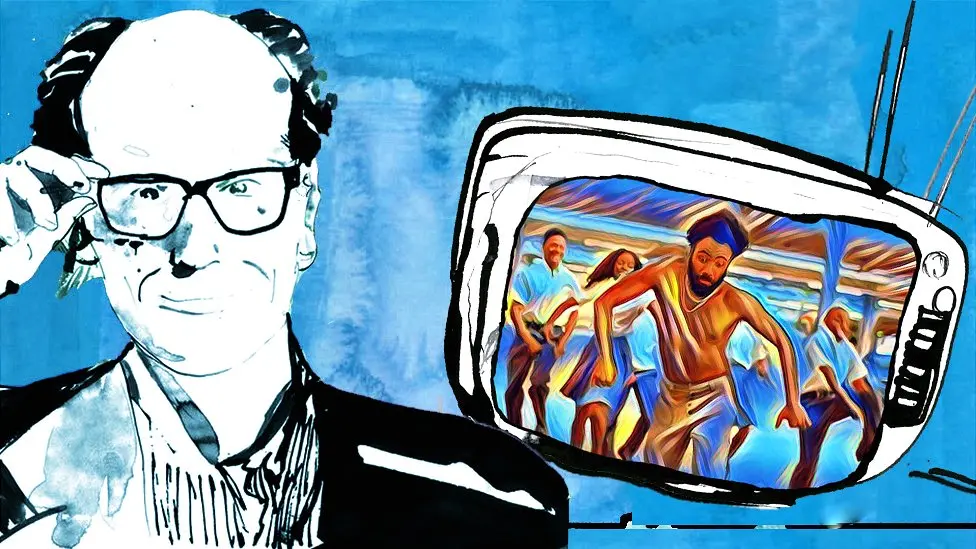 BBC
BBCIn his opening monologue as host of last week's Saturday Night Live Donald Glover described himself as "an actor, a writer, and a singer". And so he is. But he forgot to mention the fourth string to his gleaming bow of talents, the one that makes him more than just an entertainer.
Donald Glover - or Childish Gambino as he calls himself when performing as a pop-rap-trap musician - is an artist.
That is, a fine artist, as in a person whose work might be exhibited in an art gallery or bought by a museum.
In fact, if the curators at the Museum of Modern Art in New York, or indeed the Metropolitan Museum up the road, are at all switched on, they should already be in discussions with him about acquiring the master video of This Is America for their institution's collection.
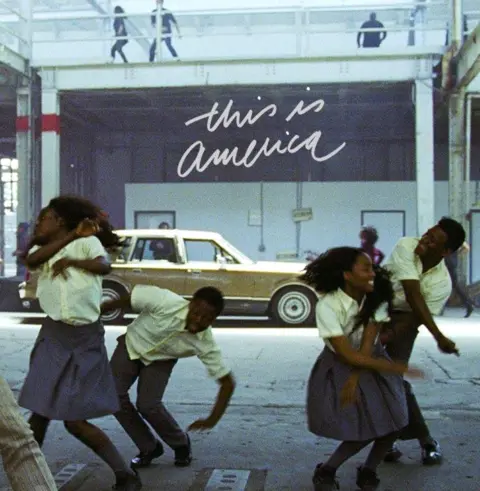 RCA Records
RCA RecordsWhy? Because it is a powerful and poignant allegorical portrait of 21st Century America, which warrants a place among the canonical depictions of the USA from Grant Wood's American Gothic to Edward Hopper's Nighthawks, from Emanuel Leutze's Washington Crossing the Delaware to America the Beautiful by Norman Lewis.
I should say at this point, for those of you who have been busy collecting rock samples on the Moon during the past seven days, This Is America is a song by Donald Glover/Childish Gambino, which he posted on the internet last Saturday night along with a video directed by Hiro Murai, with whom he collaborates on his comically surreal TV series Atlanta. I should also point out it contains explicit violence, which is inappropriate for children and possibly unpalatable for some adults.
Its subject of race, representation, opportunity and acts of extreme violence against African Americans is shared with the work of several other leading contemporary black American artists.
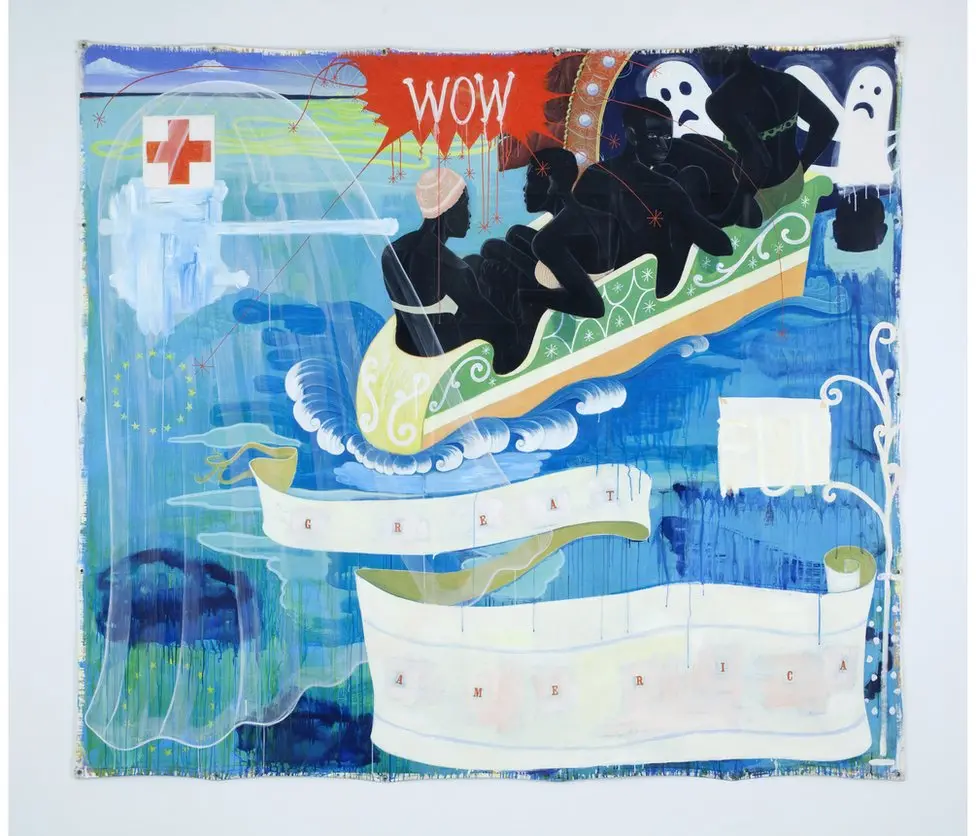 Kerry James Marshall and Jack Shainman Gallery
Kerry James Marshall and Jack Shainman GalleryThere's Kerry James Marshall's 1994 painting, Great America, for instance. Or, perhaps more obviously, Arthur Jafa's seven-minute video Love is the Message, the Message is Death from 2016, in which the artist has cut together a montage of archive footage that includes photographs of civil rights leaders and footage of the LA riots. Kanye West's gospel-cum-hip-hop Ultralight Beam acts as the backing track.
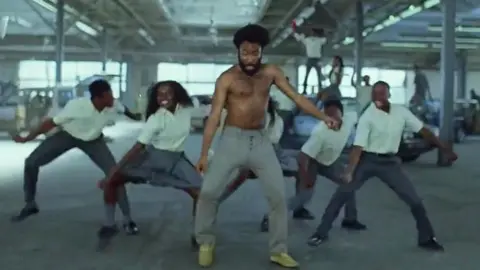 RCA
RCAThis Is America has already been watched by a gazillion people, commented on by almost as many, and deconstructed for meaning by media far and wide, from the Sun newspaper to the New Yorker.
It consists of a series of linked tableaus set in and around a vast whitewashed warehouse-type garage space (a nod, perhaps, to Michael Jackson's 1987 Bad video directed by Martin Scorsese, which itself is a nod to the "Cool" scene in the 1961 version of West Side Story).
The interior is empty except for a solitary red chair on which there is an acoustic guitar. A bald man with a beard walks towards the chair, picks up the guitar, sits down on the chair and starts to play.
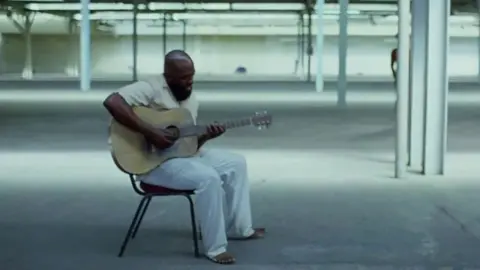 RCA
RCAThe camera moves around him to reveal another man standing with his back to us. He is wearing trousers but no shirt. He jerks his neck in time to the electro-beats. He turns and starts to move his body in rhythmic but exaggerated gestures (choreography by Sherrie Silver). He walks towards the seated man who now has a hood over his head. The shirtless dancer takes a gun from behind his back, strikes a pose (read by many to be mimicking the fictional Jim Crow) and shoots the man from point blank range.
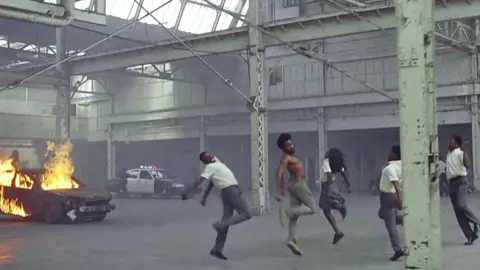 RCA
RCANow the tune changes, it's darker, heavier. A boy rushes towards the bare-chested assailant (Childish Gambino), who places his gun carefully on a piece of red cloth held by the young lad who quickly exits stage right. Gambino turns to the camera and sings "This is America".
We're only 40-seconds in but already have enough symbolism and metaphor to provide a semester's worth of content for discussion on a cultural studies degree course.
Like any decent work of art, the more you look the more you see.
There's the obvious stuff, such as how a culture obsessed with consuming sugary entertainment is wilfully ignorant to what's really going on (Gambino sings to, and dances with, a group of school children while in the background a Hieronymus Bosch-like world of murder and mayhem goes unseen or unacknowledged).
Colour is clearly a major theme. All the performers are black.
The space in which the action takes place is largely white.
Red is deployed with a Faustian twist. At first it appears to be a colour of artistic expression: the guitarist sits on a red chair to play his music. But is then murdered.
A choir sings joyfully against a red wall that echoes their red collars. Until, that is, Gambino machine-guns them down.
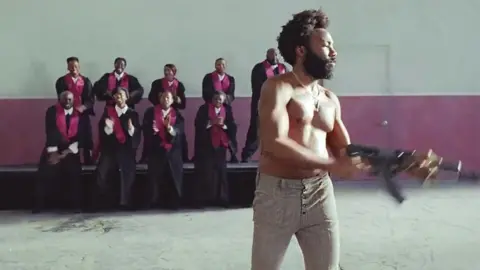 RCA
RCABy the time we see him dancing on top of a red car we know his end is nigh.
You can fill your boots with pop-culture references or enjoy the more oblique art-historical asides (the R&B singer SZA poses like the Statue of Liberty, which in turn is based on Eugène Delacroix's 1830 pro-revolution painting Liberty Leading the People).
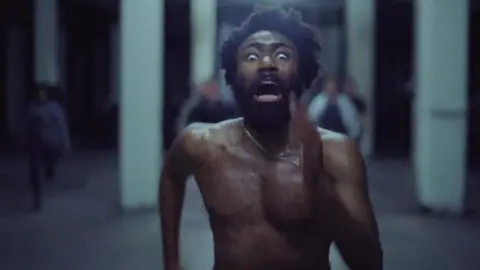 RCA
RCAThis Is America is not perfect, and certainly won't be to everyone's taste. For some it will be too ambiguous, too violent, and quite possibly seen as hypocritical. There is certainly an element of Jeff Koons' slippery superficiality at play.
And it is grotesque. But so is the bloody violence of Goya's The Executions. Because it had to be.
Both pieces speak of man's inhumanity to man. The only real difference is the time and place.
- Listen to Will Gompertz's Heat Map on BBC Radio 5 live on Sundays at 11:00 BST.
